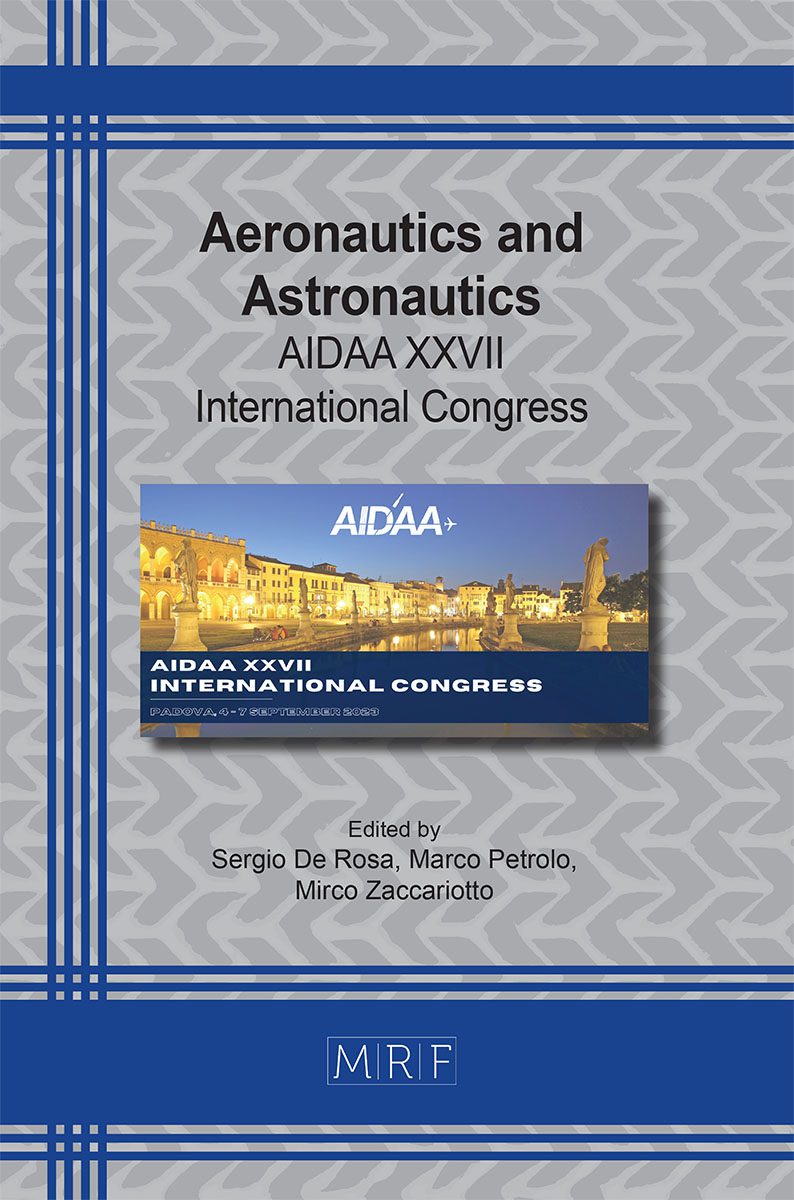Acoustic characteristics evaluation of an innovative metamaterial obtained through 3D printing technique
L.M. Cardone, S. De Rosa, G. Petrone, G. Catapane, A. Squillace, L. Landolfi, A.L.H.S. Detry
download PDFAbstract. The reduction of interior noise level in the transportation sector is a big problem to cope with in view to increase the comfort of passengers. For this reason a great emphasis from the research community is devoted to develop new technology which are able to satisfy the mechanical requirements with concrete benefits from the acoustic point of view. Currently, it does not exist a solution for wideband range of frequency. Indeed, porous materials are characterized by outstanding dissipation in the high frequency range but they exhibit poor performance in the low and medium frequency range, where instead resonant cavities systems have the best performances but with narrow-band sound absorption. For this reason, the design and development of new materials which offers a good acoustic absorption over a wide range of frequencies is requested. In this paper, a hybrid metamaterial is designed, by coupling resonant cavities with micro-porous material and obtained through additive manufacturing technique which enables to model complex geometries that could not be feasible with classical manufacturing. Numerical and experimental studies have been conducted on the manufactured samples of PLA, with an interesting focus on the effect of each parameter which affects the absorption properties.
Keywords
Noise Reduction, Sustainability, 3D Printing, Metamaterial
Published online 11/1/2023, 4 pages
Copyright © 2023 by the author(s)
Published under license by Materials Research Forum LLC., Millersville PA, USA
Citation: L.M. Cardone, S. De Rosa, G. Petrone, G. Catapane, A. Squillace, L. Landolfi, A.L.H.S. Detry, Acoustic characteristics evaluation of an innovative metamaterial obtained through 3D printing technique, Materials Research Proceedings, Vol. 37, pp 325-328, 2023
DOI: https://doi.org/10.21741/9781644902813-71
The article was published as article 71 of the book Aeronautics and Astronautics
![]() Content from this work may be used under the terms of the Creative Commons Attribution 3.0 license. Any further distribution of this work must maintain attribution to the author(s) and the title of the work, journal citation and DOI.
Content from this work may be used under the terms of the Creative Commons Attribution 3.0 license. Any further distribution of this work must maintain attribution to the author(s) and the title of the work, journal citation and DOI.
References
[1] L. Chang, A. Jiang, M. Rao, F. Ma, H. Huang, Z. Zhu, Y. Zhang, Y. Wu, B. Li, Y. Hu, Progress of low-frequency sound absorption research utilizing intelligent materials and acoustic metamaterials, RSC Adv. 11 (2021), 37784–37800. https://doi.org/10.1039/D1RA06493B
[2] L. Z., Zhang, X., Mao, Y., Zhu, Y.Y., Yang, Z., Chan, C.T., Sheng, P., Locally Resonant Sonic Materials. Science 289 (2000), 1734–1736. https://doi.org/10.1126/science.289.5485.1734
[3] N. Fang,, D. Xi, J. Xu, M. Ambati, W. Srituravanich, C. Sun, X. Zhang, Ultrasonic metamaterials with negative modulus, Nat. Mater. 5 (2006), 452–456. https://doi.org/10.1038/nmat1644
[4] M. Yang, P. Sheng, Sound Absorption Structures: From Porous Media to Acoustic Metamaterials. Annu. Rev. Mater. Res. 47 (2017), 83–114. https://doi.org/10.1146/annurev-matsci-070616-124032
[5] M.G.M. Marascio, J. Antons, D.P. Pioletti, P.E. Bourban, 3D Printing of Polymers with Hierarchical Continuous Porosity, Adv. Mater. Technol. 2 (2017), 1700145. https://doi.org/10.1002/admt.201700145
[6] D. Tammaro, A.L. Henry Detry, L. Landonfi, F. Napolitano, M.M. Villone, P.L. Maffettone, A. Squillace , Bio-Lightweight Structures by 3D Foam Printing, in: 2021 IEEE 6th International Forum on Research and Technology for Society and Industry (RTSI), IEEE, (2021) Naples, Italy, pp. 47–51. https://doi.org/10.1109/RTSI50628.2021.9597272













